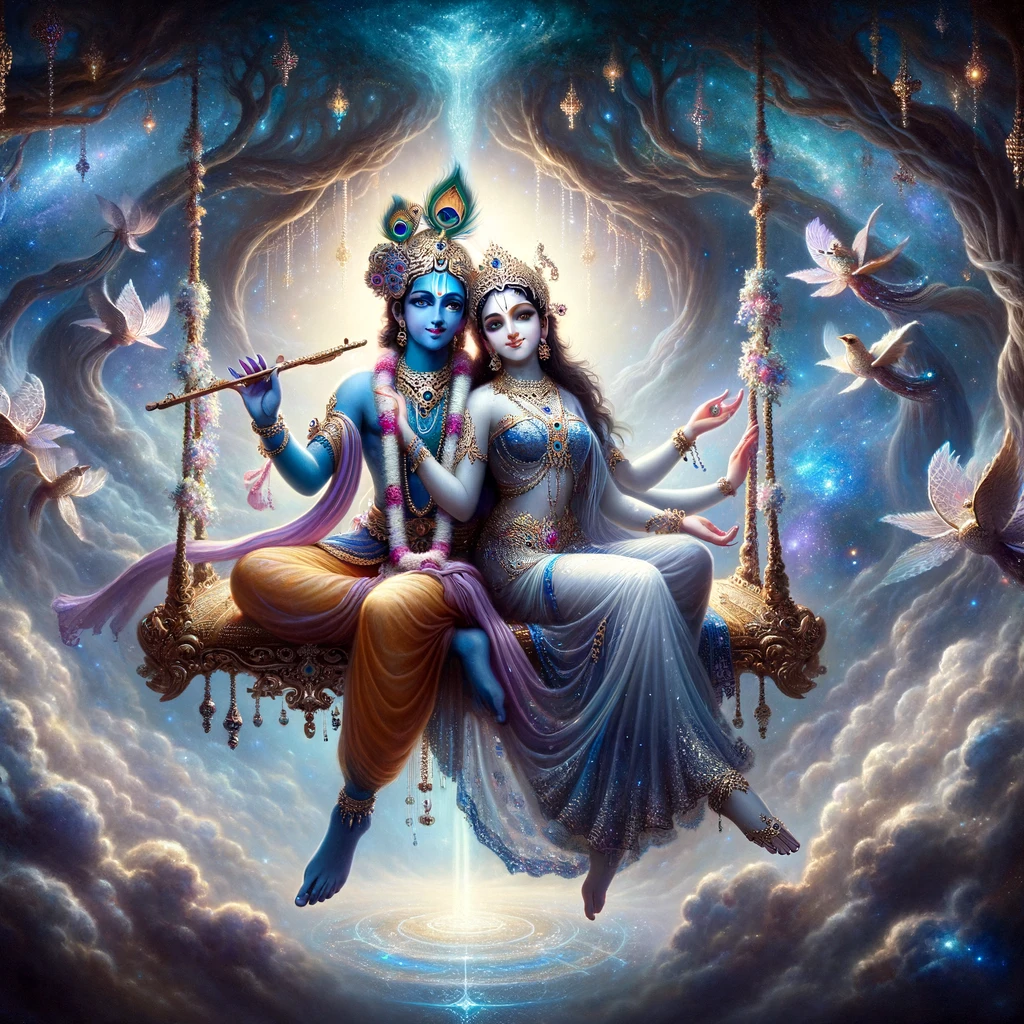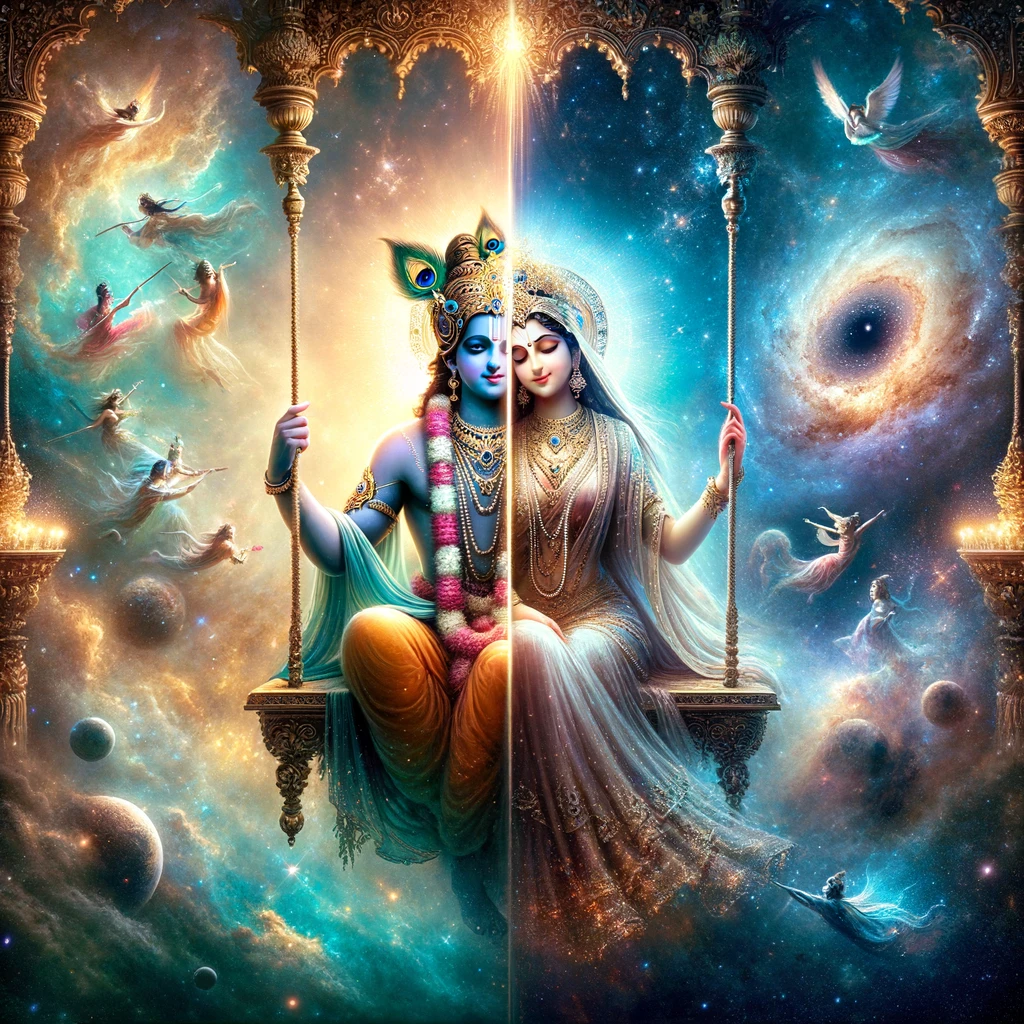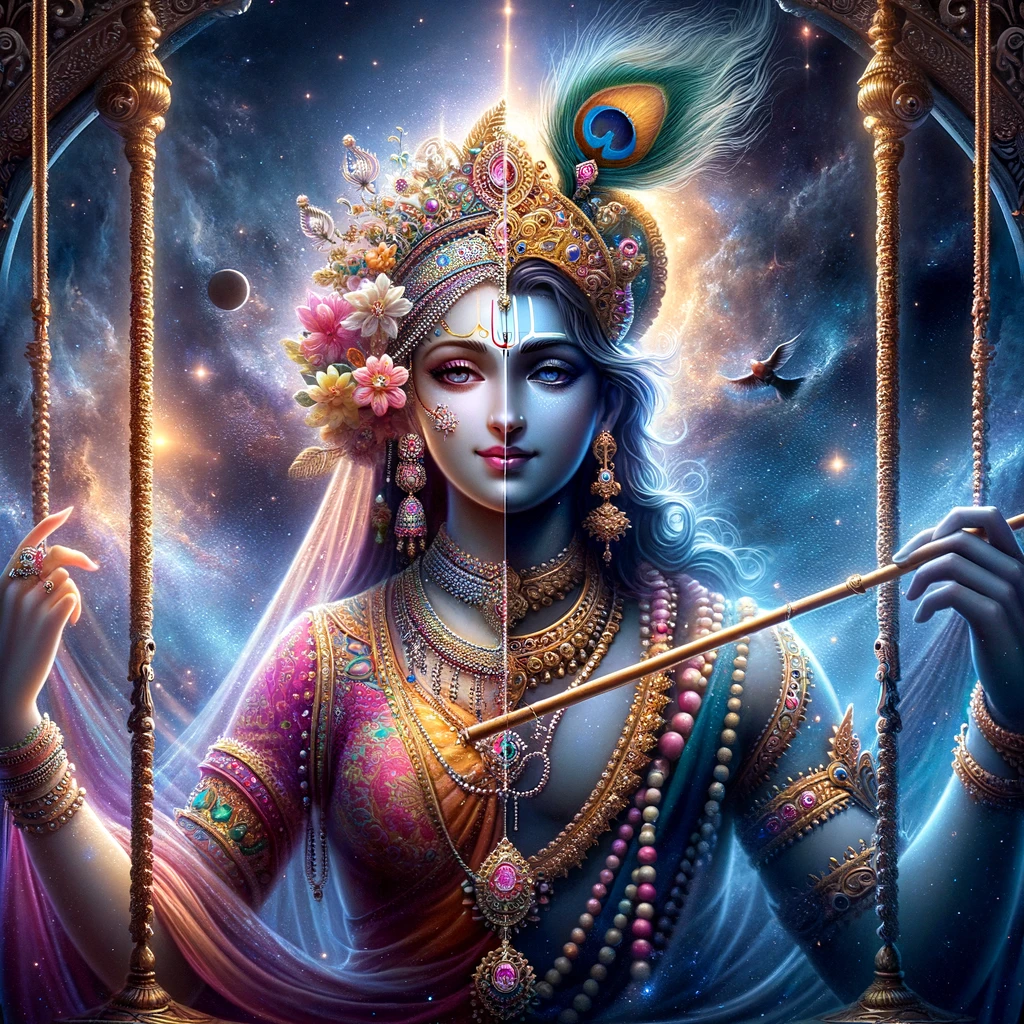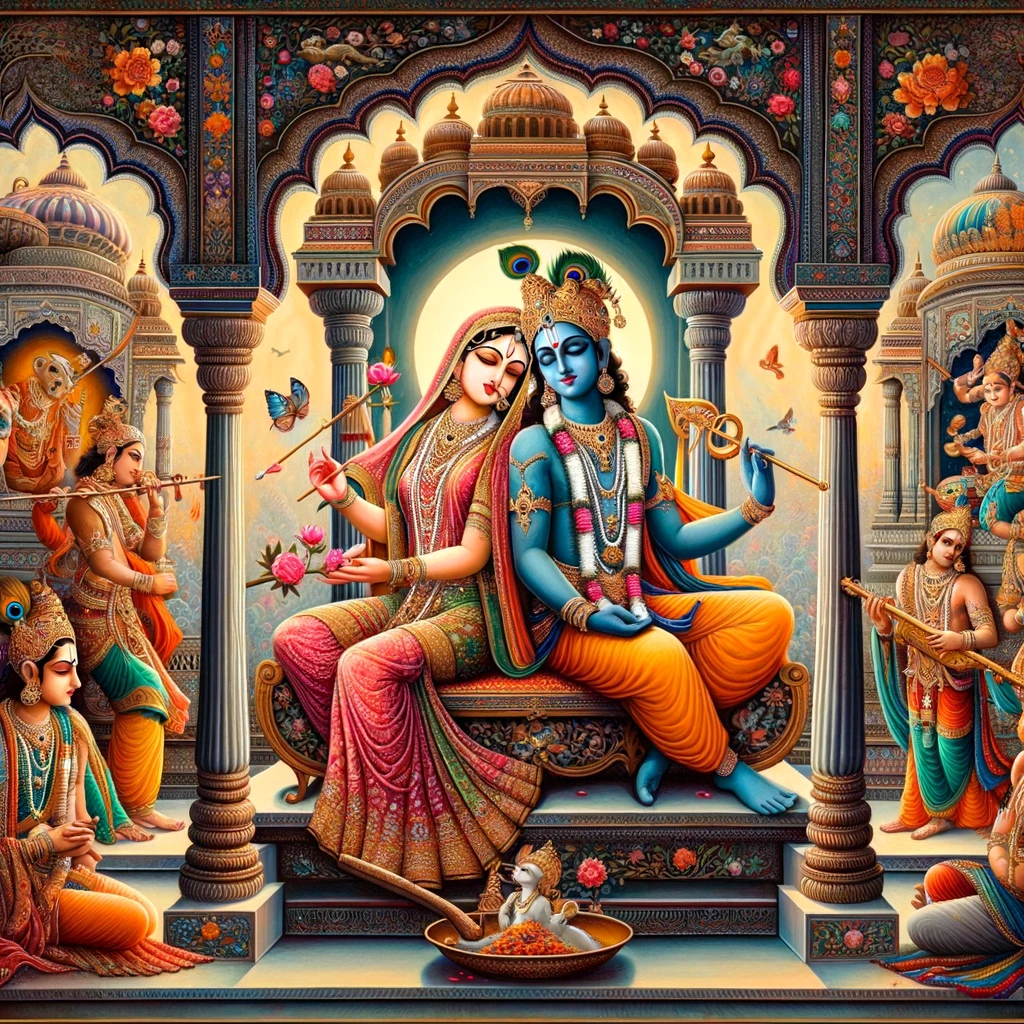In the moonlit groves of Vrindavan, where the whispers of nature sing songs of eternal love, bloomed a tale as old as time, yet forever new. Amidst the dance of peacocks and the fragrance of blooming flowers, Radha and Krishna nurtured the essence of their immortal love. A melody that resonated through the heavens and the earth. Their glances spoke volumes, their laughter echoed the joy of creation, and their silence carried the depth of the cosmos. In this sacred dance of love, where every step was a verse and every embrace a chorus, the universe itself found expression. This story, a celebration of love’s purest form, unfolds under the canopy of stars, a testament not to the unity of two beings, but to the fusion of soul with the divine, a symphony eternal and sublime.

Radha, a simple cowherd girl from the village of Vrindavan, and Krishna, a divine incarnation of Lord Vishnu, met in the lush, green pastures of their youth. Their love was not ordained by societal conventions or culminated in marriage; instead, it flourished in the forests, by the banks of the Yamuna, away from the prying eyes of the world. Theirs was a love that defied norms, a bond that transcended the physical realm to reach the pinnacle of spiritual unity.
There came a day when Radha, with a heart brimming with love, approached Krishna, her eyes reflecting the depth of her devotion. In a moment of vulnerability, she asked Krishna about the prospect of marriage, a union sanctified by societal norms yet seemingly unnecessary for two souls already intertwined. Krishna, with a gentle smile that held the wisdom of the cosmos, replied, “Radha, in marriage, two souls unite to become one. But how can we marry when there is no ‘two’ between us? You and I are but reflections of the same soul, manifestations of the same divine love. In our unity, we transcend the need for worldly rituals, for we are eternally bound by the thread of cosmic love.”

Unlike the stories of celestial weddings and divine unions, Radha and Krishna’s love story remained unconsummated in the traditional sense. They never married; Radha remained a married woman, bound to another, while Krishna, a prince of Dwaraka, later became a king and married several queens. Yet, despite these earthly ties, their love remained pure, untainted by the expectations and rules that govern mortal relationships. The question then arises, why, despite their apparent separation, are Radha and Krishna revered as the epitome of love worldwide? Their story is a reminder that true love is not about possession or societal acceptance but about the soul’s deep connection with the divine. Radha’s devotion to Krishna and Krishna’s love for Radha transcended the physical and entered the realm of the spiritual, where love is eternal and unchanging.

Years passed, In the distant kingdom of Dwaraka, Krishna fell gravely ill, a sickness no physician could cure. In this hour of need, it was the love of Radha, pure and unwavering, that came to his rescue. From the mud of Vrindavan, where Radha’s feet had once danced in blissful abandon, a remedy was fashioned. Applied to Krishna’s forehead, the mud worked miracles, not just because of its earthly properties but because it was imbued with Radha’s unconditional love. Krishna’s recovery was swift, a testament to the healing power of true love.
Their love story, though filled with moments of separation and longing, teaches that true love is about selflessness, sacrifice, and the joy of loving without expectations. Radha’s love for Krishna was not diminished by his absence or his relationships with others; instead, it grew stronger, purer, and more profound, setting an example of unconditional love.


Their story continues to inspire countless poems, songs, and artworks, serving as a beacon of love that transcends the physical, reaches the spiritual, and touches the divine. Their stories, celebrated in texts like the “Gita Govinda” by Jayadeva. Their love has been depicted in myriad ways, showcasing them in moments of separation and union, longing and fulfillment. Patta Chitra from Odisha, Rajasthani miniature paintings, Pahari paintings, and Kangra paintings are some of the traditional forms where their stories have been beautifully immortalized.

Dance forms across India have also celebrated Radha and Krishna’s love, especially through the Manipuri Raas Leela, introduced in the 18th century by King Bhagyachandra of Manipur. This classical dance form is particularly devoted to depicting the Raslila of Radha and Krishna, symbolizing their eternal love. Similarly, Kathakali and Odissi have incorporated stories of Radha and Krishna, with performances often focusing on their love tales from texts like the Gita Govinda.
Radha and Krishna’s story also touches upon the philosophical concepts of Dharma (duty) and Bhakti (devotion). Krishna, as an avatar of Lord Vishnu, had duties to fulfill on earth, which included establishing Dharma and leading by example. Radha, on the other hand, embodied the highest form of Bhakti, showing that love and devotion towards the divine can elevate the soul beyond the temporary pleasures and pains of the world.

